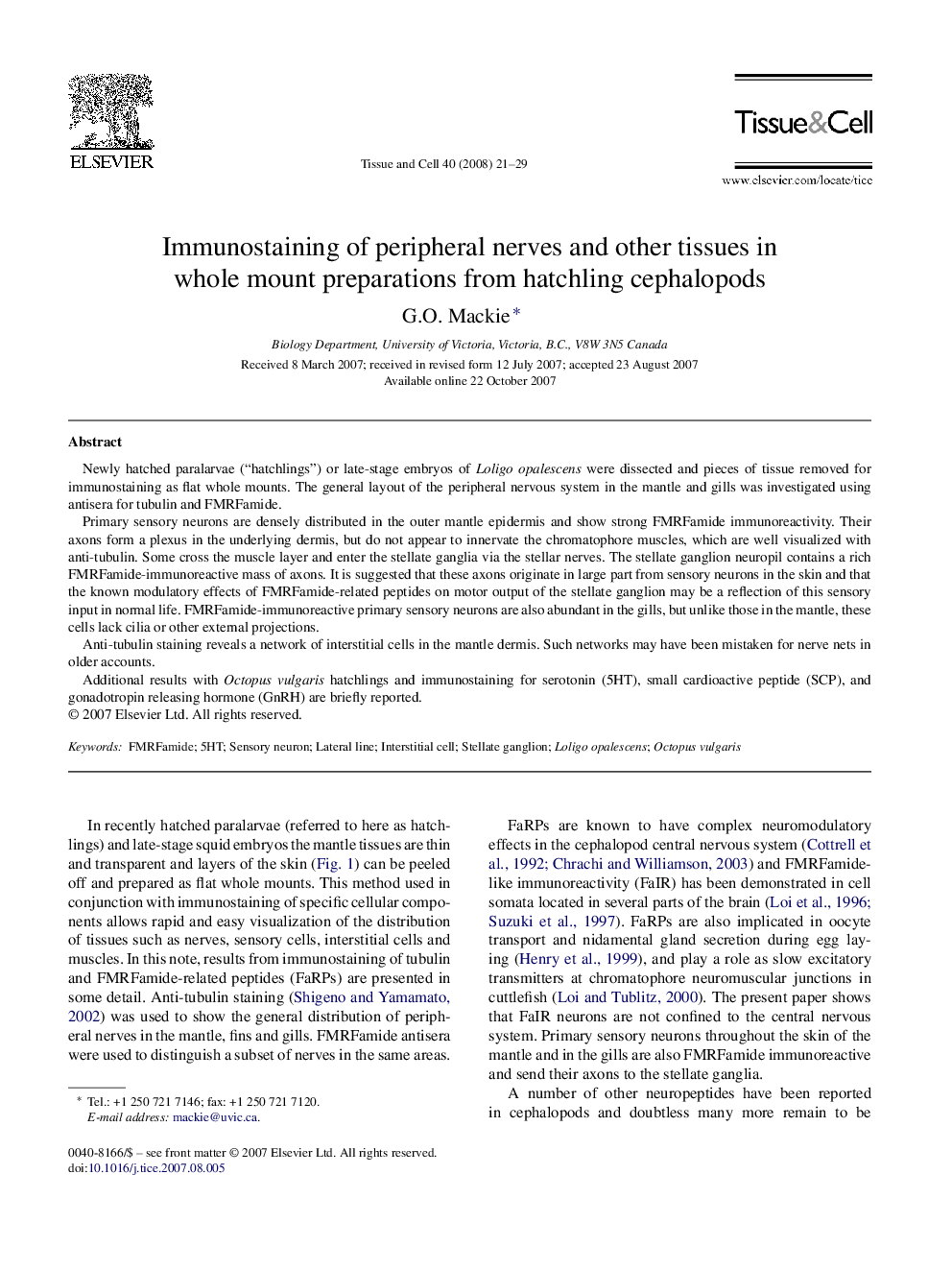| Article ID | Journal | Published Year | Pages | File Type |
|---|---|---|---|---|
| 2204120 | Tissue and Cell | 2008 | 9 Pages |
Newly hatched paralarvae (“hatchlings”) or late-stage embryos of Loligo opalescens were dissected and pieces of tissue removed for immunostaining as flat whole mounts. The general layout of the peripheral nervous system in the mantle and gills was investigated using antisera for tubulin and FMRFamide.Primary sensory neurons are densely distributed in the outer mantle epidermis and show strong FMRFamide immunoreactivity. Their axons form a plexus in the underlying dermis, but do not appear to innervate the chromatophore muscles, which are well visualized with anti-tubulin. Some cross the muscle layer and enter the stellate ganglia via the stellar nerves. The stellate ganglion neuropil contains a rich FMRFamide-immunoreactive mass of axons. It is suggested that these axons originate in large part from sensory neurons in the skin and that the known modulatory effects of FMRFamide-related peptides on motor output of the stellate ganglion may be a reflection of this sensory input in normal life. FMRFamide-immunoreactive primary sensory neurons are also abundant in the gills, but unlike those in the mantle, these cells lack cilia or other external projections.Anti-tubulin staining reveals a network of interstitial cells in the mantle dermis. Such networks may have been mistaken for nerve nets in older accounts.Additional results with Octopus vulgaris hatchlings and immunostaining for serotonin (5HT), small cardioactive peptide (SCP), and gonadotropin releasing hormone (GnRH) are briefly reported.
